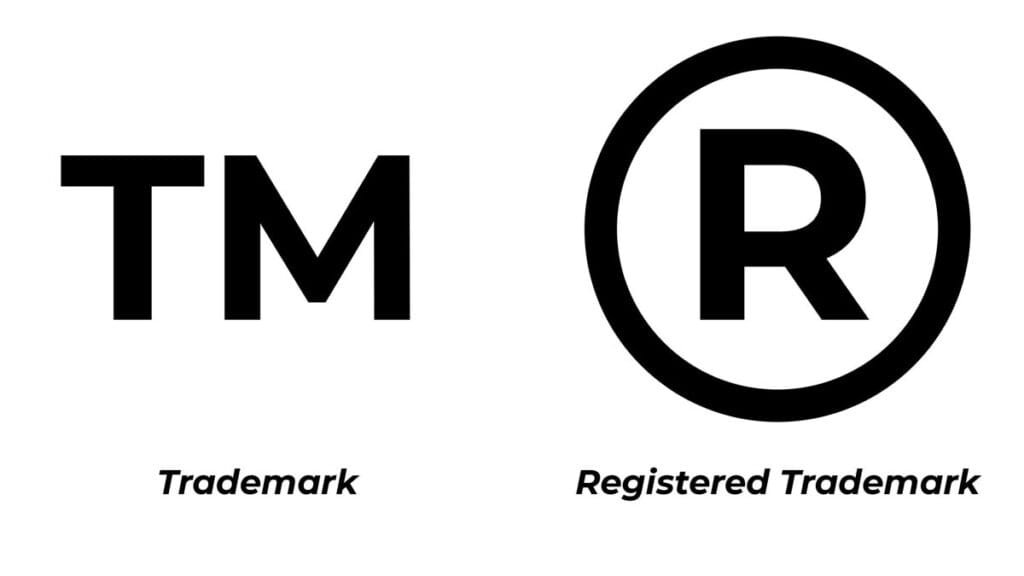How to Protect Your Design Business: A Comprehensive Guide
As a business owner, protecting your design business is crucial to ensuring its success in the long run. From protecting your intellectual property to safeguarding your client data, many areas require attention when protecting your design business. This guide will cover everything you need to know to keep your business safe and secure.
Protecting intellectual property is paramount in the ever-evolving and fiercely competitive design world. Not only does it shield your work from being shamelessly plagiarised or unabashedly stolen by unscrupulous elements, but it also safeguards your reputation and preserves the unique identity of your design business.
However, protecting your intellectual property is just the tip of the iceberg in the arduous journey of risk mitigation. With the proliferation of digital technology and the omnipresence of the internet, design businesses must also contend with many other threats, such as data breaches, cyber-attacks, and legal risks.
The complexity and intricacy of these threats necessitate adopting multifaceted and proactive strategies to protect your design business. In this comprehensive guide, we'll delve deep into several practical and effective techniques that you can employ to safeguard your design business against these potential perils. From leveraging robust intellectual property laws to fortifying your cybersecurity defences and implementing stringent data protection protocols, we'll explore a broad range of tactics that can help shield your business from the adverse effects of these risks.
According to recent statistics, cybercrime has emerged as one of the most pervasive and destructive risks facing design businesses globally. A staggering 61% of small businesses experienced a cyber attack in 2021, costing an average of $200,000 per attack. Moreover, the total cost of cybercrime is projected to reach a mind-boggling $10.5 trillion annually by 2025, underlining the dire need for design businesses to bolster their cybersecurity measures.
In light of these harrowing statistics, it's imperative to prioritise cybersecurity as an integral component of your risk management strategy. This can entail implementing robust firewalls, antivirus software, and multifactor authentication protocols to safeguard against cyber attacks. Additionally, frequent software updates, regular backups, and employee training on cybersecurity best practices can help mitigate the risk of cyber breaches.
Furthermore, legal risks can also pose a significant threat to design businesses. Design businesses must navigate a labyrinthine legal landscape from contract disputes to copyright infringement claims to safeguard their interests. In this regard, it's crucial to seek the guidance of legal experts to ensure compliance with intellectual property laws, drafting watertight contracts, and other legal requirements to mitigate the risk of litigation and safeguard your intellectual property.
Table of Contents
Understanding Intellectual Property

In the fast-paced and fiercely competitive design industry, intellectual property (I.P.) is the currency that can make or break your business. At its core, I.P. is a multifaceted legal concept that encompasses a broad spectrum of intangible assets, ranging from innovative inventions and literary masterpieces to aesthetic designs and distinctive logos. As a design business owner, safeguarding your I.P. is essential to secure your competitive advantage, preserve your unique identity, and monetise your creative ingenuity.
The multifarious nature of I.P. necessitates a nuanced understanding of the different types of I.P. and the mechanisms to protect them. One of the most common forms of I.P. is patents, which grant exclusive rights to inventors to prevent others from making, using, or selling their inventions for a specified period. According to recent statistics, the U.S. Patent and Trademark Office granted over 388,000 patents in 2020, underscoring the significant role of patents in protecting intellectual property.
Another vital form of I.P. is trademarking, which are distinctive names, logos, and symbols that identify and differentiate your business from competitors. In the U.S., registering a trademark with the United States Patent and Trademark Office (USPTO) grants exclusive rights to use and protect your trademark across the country. Furthermore, trademarks enable you to expand your brand and revenue streams by licensing your trademark to third-party companies.
Copyright is another critical form of I.P. that safeguards literary and artistic works, such as books, music, films, and visual arts, from unauthorised use or reproduction. Registering your copyright with the U.S. Copyright Office can provide additional legal protection and enable you to seek damages in case of infringement.
Design patents, trade secrets, and plant patents are other types of I.P. that can protect your design business's intangible assets. Design patents grant exclusive rights to new, original, and ornamental designs for a limited time, while trade secrets protect confidential information such as formulas, algorithms, and customer lists.
Copyrights

In the vast and multifaceted design industry, originality and creativity are the lifeblood that drives innovation, differentiation, and growth. As a design business owner, you pour your heart and soul into creating stunning designs, captivating graphics, and awe-inspiring photographs that capture the essence of your brand and resonate with your customers. However, in the cutthroat design world, protecting your creative works from unauthorised use, reproduction, and distribution is paramount to safeguard your competitive edge and ensure your long-term success.
This is where copyrights come into play. A copyright is a legal concept that grants creators of original works of authorship exclusive rights to their creations, including literary, dramatic, musical, and artistic works such as drawings, graphics, and photographs.
Copyright protection arises automatically when the work is created and fixed in a tangible medium of expression, such as paper, canvas, or a digital file. However, registering your copyright with the U.S. Copyright Office provides additional legal protections, such as the ability to sue for damages in case of infringement.
According to recent statistics, copyright infringement remains one of the most pervasive and damaging threats facing design businesses globally. A staggering 46% of designers reported experiencing copyright infringement in 2020, with an average cost of $34,000 per infringement. Moreover, the total cost of copyright infringement to the U.S. economy is estimated to be over $225 billion annually, underscoring the dire need for design businesses to adopt proactive measures to protect their creative works.
Adopting a multifaceted approach encompassing legal and technical measures is crucial to safeguarding your design business's creative works. Registering your copyright with the U.S. Copyright Office provides a robust legal foundation for protecting your works and enables you to seek legal recourse in case of infringement. Additionally, employing digital rights management (DRM) technologies such as watermarking, encryption, and access control can help deter unauthorised use and reproduction of your creative works.
Moreover, educating your employees and clients about copyright law and best practices can also help prevent inadvertent infringement and foster a culture of respect for intellectual property. This can include creating copyright policies, providing fair use and licensing training, and using contracts to clarify ownership and permissible use of creative works.
In conclusion, copyrights are a vital legal concept that protects your design business's creative works from unauthorised use and reproduction. By registering your copyright with the U.S. Copyright Office, employing DRM technologies, and educating your employees and clients about copyright law, you can safeguard your competitive edge and maximise your long-term success.
Trademarks

Branding is more than just a buzzword – it's a critical factor that differentiates your business from competitors, establishes your reputation, and fosters customer loyalty.
As a design business owner, your trademarks – including your business name, logo, slogans, and other branding elements – are invaluable assets that encapsulate your unique identity and represent your business to the world.
Trademarks are legal concepts that protect words, phrases, symbols, or designs that identify and distinguish the source of goods or services. A trademark can be a logo, a product name, or a combination of both, and it serves as a shorthand for your business's quality, values, and reputation. However, without trademark protection, your competitors can quickly appropriate your branding elements and use them to dilute your brand equity or mislead your customers.
According to recent statistics, trademark infringement is one of the most pervasive and costly risks facing design businesses globally. A staggering 85% of small business owners reported experiencing trademark infringement in 2020, with an average cost of $50,000 per infringement. Moreover, the total cost of trademark infringement to the U.S. economy is estimated to be over $600 billion annually, underscoring the critical importance of trademark protection for design businesses.
To protect your design business's trademarks, it's crucial to register them with the USPTO. Registering your trademark provides a robust legal foundation for protecting your intellectual property and enables you to prevent others from using your trademark in connection with similar goods or services. Moreover, registering your trademark allows you to expand your brand and revenue streams by licensing your trademark to third-party companies.
In addition to registering your trademark, monitoring it for potential infringement and taking swift action to enforce your trademark rights is essential. This can include conducting periodic trademark searches, monitoring social media and e-commerce platforms for unauthorised use of your trademarks, sending cease and desist letters or pursuing legal action in case of infringement.
Patents
As a design business owner, your ability to develop new and useful improvements to existing products or processes can set you apart from competitors and elevate your business to new heights. However, protecting your inventions and design techniques from unauthorised use and exploitation is essential to safeguard your competitive edge and ensure your long-term success.
This is where patents come into play. Patents are legal concepts that protect inventions, such as processes, machines, or new and useful improvements to existing products or processes, from unauthorised use, manufacture, sale, or import. In the context of a design business, you may hold patents for novel design techniques, innovative design processes, or other inventions related to the design industry.
According to recent statistics, patents protect design businesses' intellectual property and foster innovation. In 2020, over 690,000 patent applications were filed in the U.S. alone, underscoring the significant role of patents in driving progress and promoting economic growth.
However, obtaining patent protection is a complex and arduous process that requires extensive research, legal expertise, and technical know-how. This often necessitates the assistance of a patent attorney to navigate the patent application process and ensure compliance with the intricate rules and regulations governing patents.
The patent application process typically involves rigorous and time-consuming steps, including conducting a patent search, drafting a patent application, filing the application, and responding to USPTO's inquiries and requests. Moreover, patent protection is territorial and requires filing separate applications in each country where you seek protection, adding to the complexity and cost of obtaining patent protection.
Protecting Client Data

Data has emerged as the new currency that drives businesses' growth, innovation, and competitiveness in the digital age. As a design business owner, you likely have access to a wealth of sensitive client data, ranging from personal information such as names, addresses, and phone numbers to financial information such as credit card numbers, banking information, and transaction history. However, with this valuable data comes a considerable responsibility to safeguard it from unauthorised access, misuse, or theft.
The consequences of failing to protect client data can be dire and far-reaching, ranging from damage to your reputation and loss of client trust to legal and financial liability. According to recent statistics, the cost of a data breach to U.S. businesses reached a staggering $8.64 million in 2020, underscoring the critical importance of data protection for design businesses.
Adopting a comprehensive and proactive approach encompassing technical and organisational measures is crucial to protecting your design business's client data. Technical standards can include:
- Using robust encryption technologies.
- Implementing firewalls and antivirus software.
- Deploying intrusion detection and prevention systems to safeguard against cyber attacks.
Moreover, regular software updates, data backups, and employee training on cybersecurity best practices can also help mitigate the risk of data breaches and protect your client data. Adopting a data protection policy that outlines the measures you take to protect client data, the types of data you collect, and the purposes for which you use it can also demonstrate your commitment to data protection and bolster client trust.
In addition to technical measures, it's also essential to implement organisational measures such as access controls, role-based permissions, and monitoring and auditing of access to client data. This can help prevent unauthorised access and misuse of client data by employees or third-party vendors and enable you to detect and respond to data breaches quickly.
Here are a few strategies you can use to protect client data:
Use Secure Communication Channels
When communicating with clients, use secure communication channels to avoid the risk of data breaches. Encrypted email services and secure file transfer protocols (such as SFTP) can help ensure that sensitive information is transmitted safely.
Implement Strong Passwords
Strong passwords and multifactor authentication can help prevent unauthorised access to client data. Use unique passwords for each account, and consider using a password manager to store and manage passwords securely.
Regularly Back Up Data
Regular data backups can help protect against data loss and ensure that client data is recoverable in case of a breach or other data loss event.
Train Employees on Security Protocols
Educate your employees on security protocols and best practices to ensure they know potential risks and how to prevent data breaches.
Maintaining Cybersecurity

In addition to protecting client data, maintaining cybersecurity is essential to safeguard your design business. Cybersecurity threats constantly evolve, so staying current on the latest threats and best practices is necessary. Here are a few strategies you can use to maintain cybersecurity:
Use Antivirus and Anti-Malware Software
Installing antivirus and anti-malware software on all company devices can help detect and prevent cyber threats. Keep the software up-to-date to ensure it is effective against the latest threats.
Secure Your Network
Secure your network using firewalls and setting up a Virtual Private Network (VPN) to encrypt internet traffic. Make sure to use strong passwords and change them regularly.
Additionally, consider opting for the best multiple devices VPN to ensure secure connections across all your devices simultaneously.
Regularly Update Software and Systems
Regularly updating software and systems can help ensure that known security vulnerabilities are addressed. Make sure to install updates as soon as they become available to stay protected.
Limit Access to Sensitive Information
Limiting access to sensitive information can help prevent unauthorised access to client data. Make sure to restrict access to only those who need it and regularly review access permissions to ensure they are still necessary.
Managing Legal Risks

In addition to protecting intellectual property and client data and maintaining cybersecurity, managing legal risks is essential to safeguard your design business. Here are a few strategies you can use to manage legal risks:
Use Contracts
Contracts with clients can establish expectations, protect your intellectual property, and limit liability. Ensure an attorney reviews contracts to ensure that they are legally sound.
Obtain Insurance
Insurance, such as professional liability insurance, can help protect your design business from legal claims and lawsuits. Review insurance policies carefully to understand what is covered and what is not.
Consult with an Attorney
Consulting with an attorney can help you understand the legal risks of running a design business and develop strategies to manage those risks. Make sure to work with an attorney familiar with the design industry who understands your business.
Conclusion
Protecting your design business requires attention to multiple areas, including intellectual property, client data, cybersecurity, and legal risks. By implementing the strategies outlined in this guide, you can help safeguard your business and ensure its success in the long run. Remember to stay up-to-date on the latest threats and best practices to protect your business.
